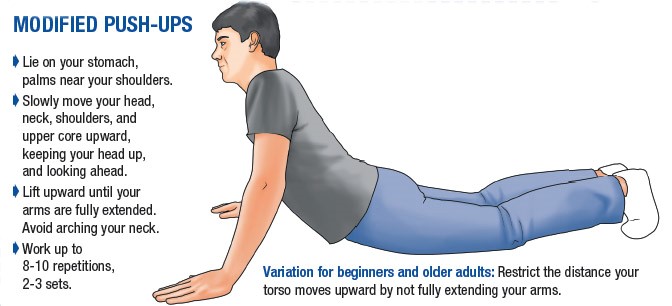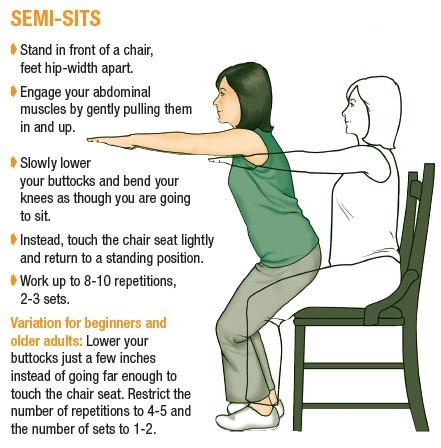Core Exercises for Seniors
Among our muscle groups, which are considered "the core"? Here, we supply the answer, along with tips on core exercises. For the elderly, they’re a key to retaining independence.
Within our body’s muscular system, we define the core as those muscles of the hips, pelvis, abdomen, and trunk. Beyond simply allowing or supporting certain movements, the core is necessary for flexibility, strength, and injury prevention.
Flexibility is the ability to move joints through a range of motion. Weak or tight muscles limit flexibility; strong muscles enhance it. Think of your body when you bend to pick up an object, stoop to do housework, dress, or bathe; our core muscles allow that flexibility.
In middle-aged and older adults, tight (less flexible) hamstrings and hip flexor muscles often affect muscles of the core, including those in the buttocks, pelvis, and lower back.
For more information about building core fitness, consult our free guide at Free Guide, Easy Exercises and Stretches: How seniors can improve stability and core strength and prevent falls
Core Exercises for Seniors: Technique Tips
- Range of motion: Full range, from full stretch to complete contraction.
- Breathing: Exhale when lifting a weight. Inhale when lowering a weight.
- Speed of movement: Approximately 6 seconds per repetition.
- Rest between sets: 30 to 90 seconds, depending on intensity of the lift.
Originally published in April 2016 and updated.





 Keep Walking to Lower Your Depression Risk
Keep Walking to Lower Your Depression Risk  Exercises For Mobility
Exercises For Mobility  Living with Dementia Means Having a Greater Fall Risk
Living with Dementia Means Having a Greater Fall Risk 
Beyond simply allowing or supporting certain movements, the core is necessary for flexibility, strength, and injury prevention.
© Wavebreakmedia Ltd | Dreamstime.com